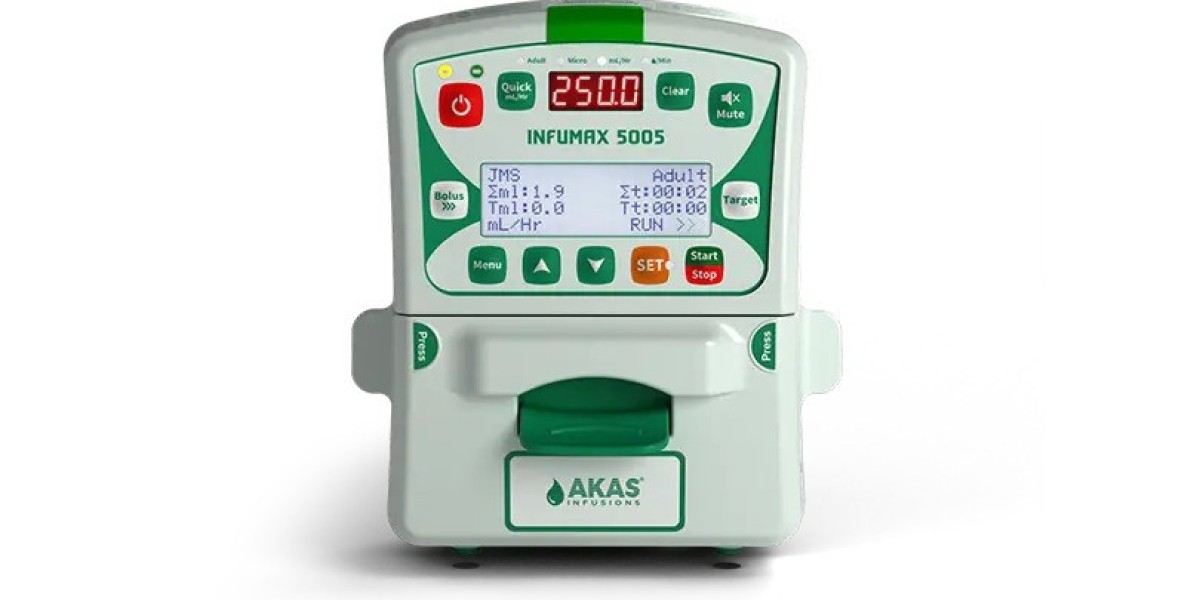Introduction
Hospitals strive to balance patient safety with operational efficiency. Among the many tools used in care delivery, the Infusion Pump remains a critical device for accurate medication administration. Yet, one challenge hospitals often face is the variation in pump models across departments. This lack of uniformity leads to increased training demands, staff confusion, and higher costs.
By adopting standardised infusion pump systems, hospitals not only ensure consistent care but also significantly reduce the financial and time burden of training clinical staff. This approach supports a smoother workflow, reduces errors, and strengthens overall patient outcomes.
The Challenge of Diverse Infusion Pump Models
When hospitals use multiple types of infusion pumps, each device comes with its own learning curve. Nurses and clinical staff must undergo separate training programmes, which consumes time and resources.
Different user interfaces create confusion during urgent situations.
Staff rotations between wards require re-learning unfamiliar devices.
Training costs increase as hospitals need separate sessions for each model.
Risk of medication errors grows when staff are unsure of device operation.
Such challenges make it evident why infusion pump standardisation is essential for hospitals seeking efficiency without compromising patient safety.
Benefits of Infusion Pump Standardisation
Hospitals that adopt a single platform for infusion pump systems gain immediate and long-term benefits. The financial savings extend beyond reduced training costs to improved operational performance.
Key Advantages of Standardisation
Reduced Training Time: Staff only need to master one infusion pump system, cutting learning hours and costs.
Improved Staff Confidence: Nurses and clinicians gain familiarity, boosting confidence and reducing errors.
Operational Efficiency: Rotating staff between departments becomes seamless with consistent pump usage.
Lower Maintenance Costs: Standardisation streamlines spare parts management and technical servicing.
Enhanced Patient Safety: Uniform devices decrease the likelihood of programming mistakes.
Better Procurement Planning: Hospitals save money through bulk purchasing and service agreements.
This unified approach ensures hospitals can prioritise patient care while reducing unnecessary spending on repeated training programmes.
The Impact on Training Costs
Training represents a significant investment for hospitals, particularly when multiple infusion pump models are in use. Standardisation addresses this challenge directly by simplifying the process.
Cost Savings: Hospitals reduce expenses related to trainer fees, learning modules, and additional staff hours.
Time Efficiency: Clinicians spend less time away from patient care during repeated training sessions.
Rapid Onboarding: New staff can be trained more quickly, ensuring faster integration into clinical teams.
Consistency in Practice: Reduced variability leads to fewer errors and higher levels of patient satisfaction.
With this streamlined approach, hospitals can allocate saved funds to other critical areas such as research, patient support, or infrastructure development.
Supporting Clinical Teams with Standardised Infusion Pump Systems
Beyond financial savings, standardisation strengthens staff morale. A hospital environment where medical teams feel confident using their tools is one where patients benefit most. Familiarity with a single infusion pump design allows caregivers to focus fully on patient needs rather than device operation.
Consistency across departments fosters collaboration and reduces stress in high-pressure scenarios. It also makes compliance with safety protocols easier, as staff operate within a predictable and familiar framework.
Conclusion
Standardising Infusion Pump systems brings measurable advantages to hospitals, particularly in lowering training costs and improving staff efficiency. It creates a safer, more consistent environment where clinical teams can focus on delivering the highest standards of care.
As hospitals look towards reliable partners for their medical technology needs, manufacturers play a vital role in providing innovative and dependable solutions. Akas Infusion continues to support this mission by manufacturing world-class drug delivery devices such as volumetric pumps, designed to improve efficiency, safety, and patient comfort in modern healthcare institutions.






